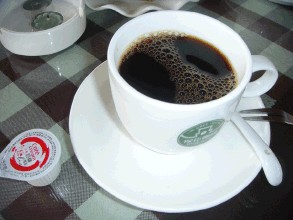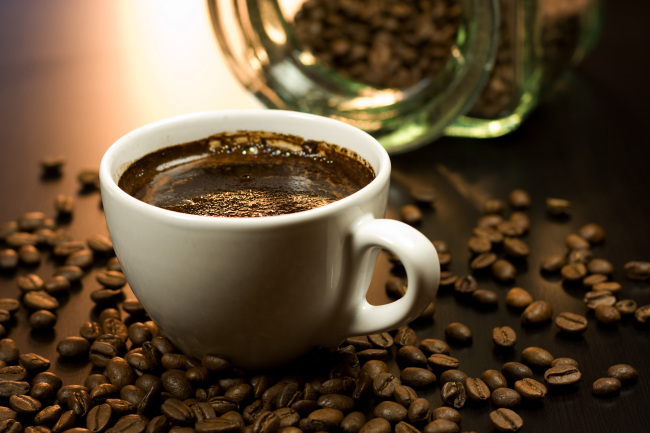Introduction to the flavor and taste of Costa Rica Saint Roman Coffee Manor with full grains and ideal acidity
Walk 20 minutes to the bus stop (there are more than N bus stops in San Jose, leaving in different directions). The bus leaves punctually at 5: 00 and arrives at Parlma at 11: 15. The Sierpe ship only leaves at 11:00 and 15 o'clock a day. I don't think I can catch the first boat at all. A taxi driver did me a favor. He called the boatman and told him that someone else was going to take the boat. Then I drove the car to 100km Universe and arrived at the wharf, but the boat hadn't left yet. I got on the boat in a hurry, and no sooner had I settled down than I left. The speedboat travels through a zigzag river full of mangroves, in some places so narrow that only one boat can pass through, and in some places it is very open, like a big lake. About half an hour later, the speedboat came to the estuary. I thought it was here. Unexpectedly, the ship speeded up, walked along the coast against the waves for another half an hour, and landed on a beach. Without the dock, the boatman jumped down and stood in the water, stopped the boat with his hands, and everyone took off their shoes and waded ashore. The people of each hostel have long been waiting on the shore with signs with their names written on them. I looked around and didn't find anyone coming to pick me up. After talking to the boatman, he made a phone call and asked me to wait a moment. Soon, a four-wheeled motorcycle (which felt like a tractor with its cab dismantled) sent me and another German tourist to the Pravida Lodge Hotel.
Coffee was introduced into Costa Rica from Cuba in 1729. Today, its coffee industry is one of the well-organized industries in the world, with a yield of 1700 kg per hectare. Costa Rica has only 3.5 million people but 400m coffee trees, and coffee exports account for 25 per cent of the country's total exports. Costa Rica's volcanic soil is very fertile and well drained, especially in the central plateau CentralPlateau, where the soil consists of successive layers of ash and dust. Costa Rica was therefore the first country in Central America to grow coffee and bananas for commercial value. Coffee and bananas are the country's main exports.
The research center, located about 30 kilometers northeast of San Jose, the capital of Costa Rica, belongs to the Costa Rican Coffee Association and is a national coffee species in Costa Rica.
The newly developed villa sarchi planting, breeding and quality inspection research institutions, in addition, it also has 10 hectares of experimental plots, planting a number of excellent varieties. Coffee is Costa Rica's main agricultural product, with an annual output of more than 2 million bags (60 kilograms) and foreign exchange earnings of 250 million US dollars, second only to pineapples and bananas.
All the coffee trees planted in Costa Rica are Arabica coffee trees. through improvement, the quality of coffee beans is better and more stable. in order to facilitate picking, coffee trees are kept at a height of about 2 meters through continuous pruning. The coffee that people eat is the taste of the seeds in the fruit that are brewed in water. After picking raw coffee beans, it is necessary to remove the peel, pulp, seed film and sun exposure before the seeds (that is, coffee beans) can be roasted. Now part of the process can be replaced by machines, and the speed of coffee production has increased a lot. However, there is no machine to do coffee picking, so you must use manual labor.
Costa Rican Coffee-introduction
Costa Rican coffee has full particles, ideal acidity and unique strong flavor.
Costa Rica's coffee industry, originally controlled by the Costa Rican Coffee Industry Company (ICAFE), has been taken over by the official Coffee Committee (Oficinale Cafe). Among the exported coffee, those products that are considered to be of substandard quality are colored with blue vegetable dyes and then transferred back to China for sale. Coffee consumed domestically (dyed blue or undyed) accounts for about 10% of total production, and local per capita coffee consumption is twice that of Italy or the United States.

Important Notice :
前街咖啡 FrontStreet Coffee has moved to new addredd:
FrontStreet Coffee Address: 315,Donghua East Road,GuangZhou
Tel:020 38364473
- Prev

Introduction to the flavor and taste characteristics of Antigua Coffee Manor in Guatemala with a long and clear aftertaste
Guatemala's extremely hard beans are famous for their elegant, sour, clean, well-structured, as well as sour apples, berries, jasmine, orange peel, green pepper, sweet and sour fruit, sweet chocolate, and even smoky aftertaste. Such a rich regional flavor should be related to the soil and water in the eight major producing areas of the dangerous country. Among them, Antigua, Alcatel Nango Valley, Attilan, Holy Horse
- Next

Introduction to the varieties of flavor and taste in the coffee producing area of El Salvador Himalayan coffee farm
El Salvador's ice cream is somewhat famous, and then our coffee and dishes are gradually recognized by the guests. The success of today's business, on the one hand, is their persistence in the quality of ingredients, and more importantly, their United staff. El Salvador now has 16 employees, most of whom are from Lincang, including veteran employees who have worked here for 10 years, and others who have joined the team.
Related
- Detailed explanation of Jadeite planting Land in Panamanian Jadeite Manor introduction to the grading system of Jadeite competitive bidding, Red bid, Green bid and Rose Summer
- Story of Coffee planting in Brenka region of Costa Rica Stonehenge Manor anaerobic heavy honey treatment of flavor mouth
- What's on the barrel of Blue Mountain Coffee beans?
- Can American coffee also pull flowers? How to use hot American style to pull out a good-looking pattern?
- Can you make a cold extract with coffee beans? What is the right proportion for cold-extracted coffee formula?
- Indonesian PWN Gold Mandrine Coffee Origin Features Flavor How to Chong? Mandolin coffee is American.
- A brief introduction to the flavor characteristics of Brazilian yellow bourbon coffee beans
- What is the effect of different water quality on the flavor of cold-extracted coffee? What kind of water is best for brewing coffee?
- Why do you think of Rose Summer whenever you mention Panamanian coffee?
- Introduction to the characteristics of authentic blue mountain coffee bean producing areas? What is the CIB Coffee Authority in Jamaica?

